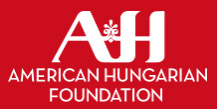Fraternity-Testvériség, 1975 (53. évfolyam, 1-12. szám)
1975-07-01 / 7-9. szám
LÁSZLÓ ESZENYI: FAITHFUL UNTO DEATH The life and heroic death of Michael Kovats de Fabricy Colonel of the Cavalry and hero of the American War of Independence I. THE AMERICAN BALAKLAVA. On May 11, 1779, the southern group of the British forces, without firing a shot, came within hours of conquering the most important port of the insurgents, Charleston, South Carolina. The force failed in attaining an almost sure victory by the death-defying attack of a tiny fighting unit, consisting mostly of Europeans. The raid, which reminds the posterity of Baklava, finally was stopped, after suffering heavy casualties, from the lethal fire of the British mercenaries. As a result of the battle, however, General Provost started his retreat the next day and Charleston remained in the hands of the insurgents for another year. The new strategic plan of Sir Henry Clinton, the British Commander- in-Chief, to break the resistance of the insurgents by launching an offensive from the south had failed at Charleston. More and more educated Americans are aware today that the valiant attack at Charleston was the most outstanding military achievement of the Pulaski Legion. Unfortunately, there are only a few who know that it was Michael Kovats de Fabricy who contributed the lion’s share to the organization and training of the Legion. He lost his life as the colonel- commander of the Legion in the battle around Charleston in the defense of the independence of the United States of America and of the freedom of the American people. We owe it to the memory of our renowned military ancestor and to the reputation of the Hungarian name in America to tell the story of his colorful life and heroic death during the American Bicentennial. II. THE SON OF THE HUNGARIAN PLAINS. We know little about the childhood and early youth of Michael Kovats. The first authentic data reports that he entered military service at an age of twenty in 1744 in the First Jasz-Cumanian Cavalry Regiment. In describing his country of birth and characterizing its people we would like to provide the background which makes his cometlike career in the military and his later gallant deeds more easily understandable. For Kovats is a true Cumanian with all the virtues and vices of his race. The real Cumanian is born in the Plains, is reared in the saddle and dies fighting. Therefore the Cumanian Plains of Hungary has ever been the home of the best cavalry soldier of the world, the hussar. Kovats came into the world in August 1724, at Karcag, at the outskirts of the well-known Hortobágy Puszta. As a result of 150 years of Turkish rule, the number of settlements had decreased, and an almost endless plain covers the space between them. No hills or small glens to break the monotony for the eyes of the traveller. At times one perceives large cattle or horse herds. In Kovats’ day, cattle breeding had priority, and agriculture was only of secondary importance. Wealth was measured in cattle, not in acres. The Kovats’ must have been affluent people for at the end of his trial in Vienna the queen herself made arrangements for the restitution of his personal and real assets. Just as the Great Cumanian Plains are open and easily discernible, its people are straightforward, fearless and outspoken. By Royal Decree every Cumanian enjoyed the privileges of noblemen. In his checkered life, Kovats, no matter in what position, never forgot to mention that he was a nobleman and a Hungarian. One of his military reports in Prussia is signed: “v. Kováts, i.e., von Kováts,” adding the accent in accordance with Hungarian orthography. In the reports of the Military High Command of Buda he is listed as Major “noble” Kovats without a predicate. However, he signs his June 13, 1777 letter to Benjamin Franklin as: Michael Kováts de Fabricy. The genealogical books known to us register only one Kovats de fabricy family who hails from Zemplén county and write their name with “cs” at the end. The authenticity of the predicate is still a matter of further research. Kovats probably received the same education as the other young noblemen of his time. The letter drafted in excellent Latin to Franklin demonstrates that not only did he study Latin for a long time, but he must have spoken it frequently, for otherwise he would have been unable to retain this extremely difficult language at the level displayed in the letter. This was not really unusual because the official language of the diets and the counties had remained Latin in Hungary as a means of protesting the Germanizing policies of Vienna. We have no original painting or drawing of Kovats. His colorful and adventurous life inspired the imagination of many artists, but the paintings, statues and plaques depicting him are products of artistic fantasy. Alexander Finta, the American Hungarian sculptor, spent considerable efforts in 20
